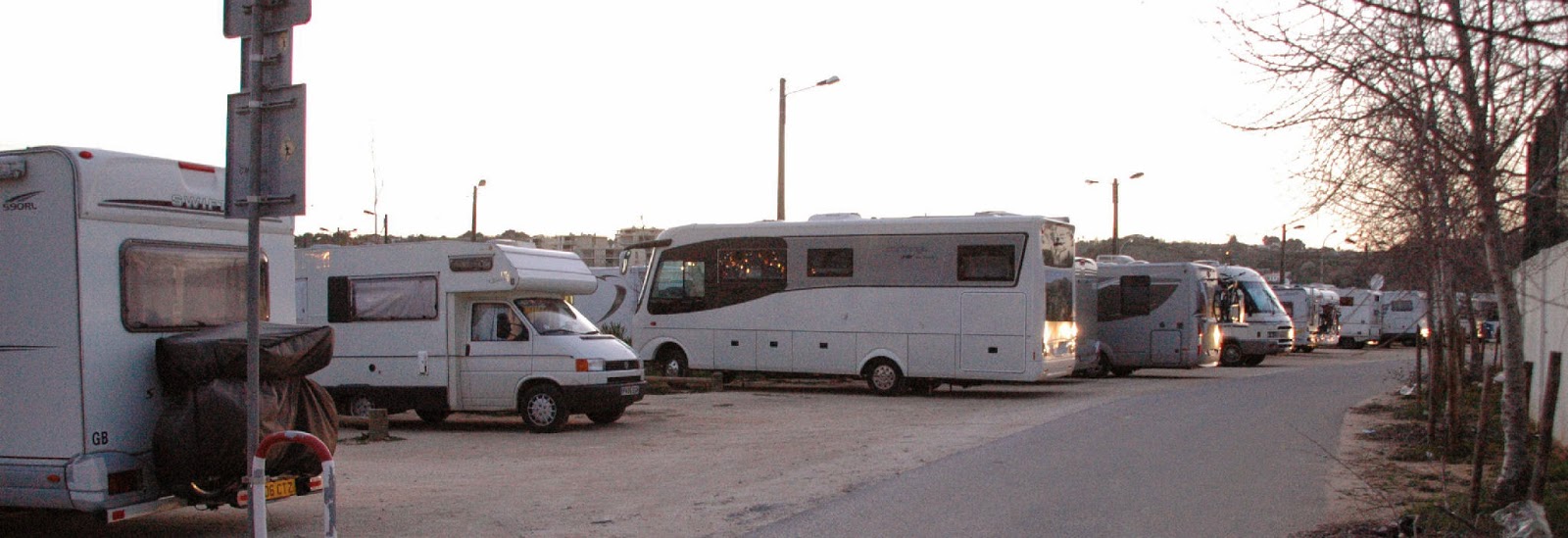Ponta de Sagres. Told you about the Christopher Columbus link yesterday. The 16th century fortress here was all but destroyed in the 1755 earthquake, but a lot of reconstruction has taken place in the mid-to-late 20th century. It's still nothing like Fort George in Scotland or Charles Fort in Ireland, but is still interesting in its own right. There is an old church on the site that has been at least partially restored since 1755!
There's an enigmatic structure here, unearthed in 1919. It is a radial array of rocks, with 48 equally-spaced radial lines inside a circle 50m in diameter. It was cleaned and consolidated in 1959, and named "Rosa dos Ventos" (Mariner's Compass). Whether it was actually associated with the seafaring school allegedly founded here by Prince Henry the Navigator. It could as easily have been a gigantic sundial! In either case, it dates back to the 15th or 16th century!
The point itself is severely eroded limestone, and has its own ecosystem. You can walk all over the point — in fact, they have created very walkable pathways, with informative signage all the way round.
Yesterday was a calm, sunny day. Today was sunny, but you couldn't really say calm — the wind was blowing us every which way! We kept on meeting up with a German gentleman we walked up with on the approach path. He had lived in the town 18 years ago, and was intrigued at how much — and how little — had been done to change the place. When he was here last, it was a sleepy fishing village, but today there is a lot more emphasis on tourism!
We were commenting later on about the difference in attitudes to development between Spain and Portugal. Spain has taken out huge loans to support development, and has been caught very badly in the world economic downturn (thank you, USA!). Portugal, on the other hand, has always encouraged investment, and has only spent what moneys were actually coming in. Although they are not as far progressed in their development as Spain, at least they are not lumbered with overwhelming debt! One of the differences in attitude is that Spain's major arterial roads have been funded on loan moneys, and only a couple of them are tollways. In Portugal, the opposite holds — most of the major arterial roads are tollways. This makes Portugal rather more expensive to travel through, but at least the roads are paying for themselves.
After a leisurely — and blowy — wander about Ponta de Sagres, we set off for Lagos, where we planned to explore tomorrow. The journey, to the northeast along the coast to Alfambras and then back overland to Lagos, was picturesque, and the drive leisurely.
At times, with the gum trees lining the road, we could have been back in Oz (but driving on the wrong side!! — we'll have to be careful when we get back!) We camped off in a very popular commercial (but cheap) aire beside the sportsground, and settled in to movie watching, to the sound of rain pattering on the roof of the van.
At times, with the gum trees lining the road, we could have been back in Oz (but driving on the wrong side!! — we'll have to be careful when we get back!) We camped off in a very popular commercial (but cheap) aire beside the sportsground, and settled in to movie watching, to the sound of rain pattering on the roof of the van.
Distance driven — today, 41 miles ( 66 km ); to date, 12,662 miles ( 20,378 km )










I wrote a lengthy comment about the gums being fire risks; about the wise Portuguese with finances and damn USA! and its big ideas about money. We are still not sure what sort of a state government you are going to return to in Qld. I think the circle is a sundial. The fort looks so white compared with the others you showed us. Oh well, hope this one is publishedd, Love cathy, PS which way doees the wind mostly blow in Portugal? Is it affected by those warm currents in the Atlantic. liked the guy on the horse-nice horse! X
ReplyDelete